Mug Club Guide - 6 Things To Consider For Your Brewery (2024)

February 9, 2024
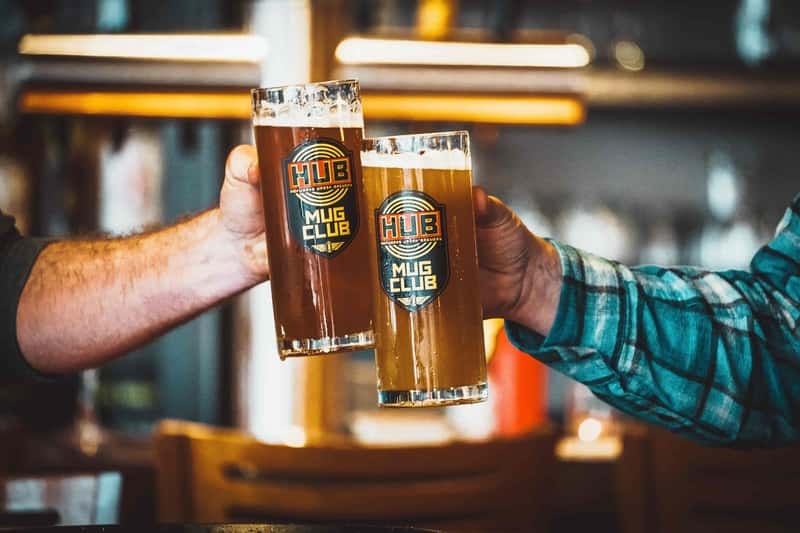
UPDATED: 2/9/24
Craft beer is a social community. Whether you’re grabbing pints with friends at a local taproom, traveling to a beer festival with your college pals, or even just making new acquaintances during a brewery tour, breweries (and beer!) facilitate social interaction. Drinking beer with a stranger is like breaking bread with them. We connect over the liquid.
For breweries looking to foster their own communities, starting a mug club program can be a great opportunity. Typically, fans can purchase access to a mug club for a yearly fee, unlocking a host of perks, discounts, exclusive tastings and events, and more. The mugs not only allow brewers to give a little something back to their most devoted fans, but also help create a loyal culture.
Additionally, the idea of an exclusive group like a mug club gives your most passionate consumers the chance to meet one another and geek out over beer while supporting your business.
Plenty of breweries across the country already offer mug club memberships. But, how do you go about starting one? And, what makes one worth it?
What We’ll Cover in This Piece:
- What Is the Goal of Your Mug Club?
- What Type of Mug Club Is Right for You?
- Fee-Based Membership Mug Clubs: Limited vs. Unlimited
- How Much Money Can Your Mug Club Make?
- What Perks Should You Include In Your Mug Club?
- How To Market Your Mug Club
- One Final Note: A Mug Club Must
- Your Mug Club Is Ready. Time to Start Toasting!
What Is the Goal of Your Mug Club?

You can’t start brewing a beer without developing a recipe, right? So, before diving head first into planning a mug club, you need to do your homework and figure out if you even need one.
Ask yourself your motivations for starting a mug club:
- Do you want to start the club for financial gain?
- Are you looking for a way to attract more customers into the taproom on a Monday night?
- Are you interested in creating a program that fosters community and rewards your most loyal members? All of the above?
“For us, it's much more about the program and the community than the financial gain,” says Cayla Marvil, Co-Founder of Lamplighter Brewing Co. in Cambridge, MA. “[Financially], it’s small potatoes in the scheme of things, so it's just fun to have something for loyal customers and regulars.”
From Lamplighter’s inception, Marvil and her business partner AC Jones knew that a mug club would be a good fit for their business. They both fell in love with one at Bobcat Cafe, their favorite haunt in Vermont during college, and wanted to recreate that sense of community within their own business.
In fact, Marvil and Jones offered memberships to their mug club even before they launched the brewery, which can be a great way to build early traction.
“We wanted a way to thank early supporters and create a loyalty program for them,” says Marvil. “So we launched the mug club even before we opened to anyone following us on social media, so they could get an insider look at what was going on in the taproom.”
In terms of accomplishing Marvil’s stated goals, the club has been a huge success. When Marvil and Jones launched in 2017, the mug club sold out within the first hour. And while Marvil counts 15 or 20 members who have participated in the club since the beginning, the club has grown to 100 members.
Likewise, Federation Brewing in Oakland started a mug club in 2014 as a way to incentivize and thank its regulars.
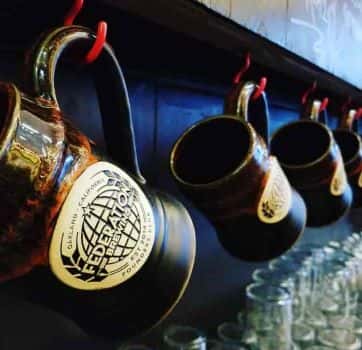
“A mug in hand will empower people to be an ambassador for us,” says Caitlin Jewell, Retail Director at Federation. “[In the taproom] they’ll turn to their left or turn to their right and talk about our story to strangers. With a good mug club, folks will continue to tell other people about who you are and your mission.”
And while Jewell says understanding your own goals for starting a mug club can sometimes be hard to nail down, it’s one of the most important first steps. Which makes sense, right? In order to know where to travel, you need a destination.
What Type of Mug Club Is Right for You?
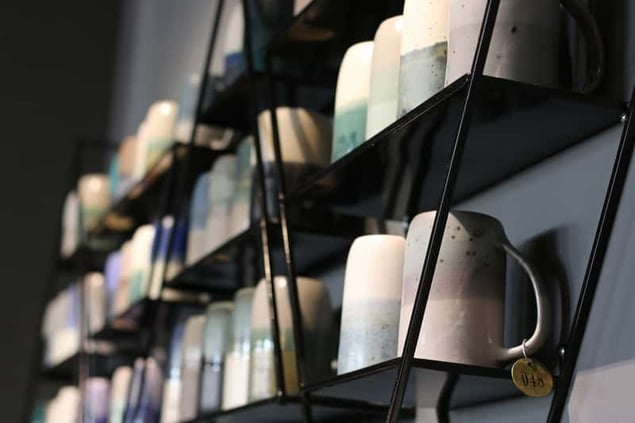
If starting a mug club sounds like a great fit for your business, you’ll want to explore the different types of memberships. Typically, mug clubs fall into one of three categories. Each has their own pros and cons, so study up!
Mug Club Challenge
In this style of club, breweries list a certain amount of beers on a digital beer menu and challenge their customers to try them over a certain period of time. Once someone hits that mark -- whether it's 25 beers, 50 beers, or 500 beers -- they win a prize. A fairly uncommon style of mug club, this strategy works best for larger restaurants or establishments that offer a lengthy draft list. This type of club also works well with venues that have the space to visually represent how far each of their customers have come -- with, say, a chart on a wall, or some type of large graphic.
Loyalty Program
Much like the punch cards you’ll find at your local coffee shop, a loyalty program offers a customer a punch every time they drink. After they reach a certain number of punches, they’re rewarded with some free swag. Another fairly uncommon style of mug club, this works best for speakeasies or other venues interested in adding a layer of exclusivity to their brand.
Fee-Based Membership
By far the most common mug club model you’ll find among breweries, a fee-based membership requires a customer to pay a one-time fee that typically covers the cost of a custom mug and unlocks special discounts, promotions, exclusive invites to tastings and events, and sometimes even extra swag. In fact, this type of membership is so popular that we’ve given it a special section with more details. Read on!
Fee-Based Membership Mug Clubs: Limited vs. Unlimited

Following a fee-based subscription for your mug club will lead to another layer of consideration. Do you want to put a cap on the number of members who can participate (a limited club) or open up the club to any guest that wants to purchase a membership (an unlimited club)?
A limited club means you’ve set a specific date every year to sell new memberships and renew old ones. One of the great advantages to a limited amount of memberships is the easy maintenance. You only have one day of the year to worry about selling. Ideally, you fill all your memberships and set yourself up for a successful year.
For instance, at Lamplighter, Marvil launches only 100 new and renewal memberships in November and December. And once they’re gone, they’re gone. The timing provides an influx of cash around the holidays so she can give bonuses to her staff. The club also “gives us an extra boost that we can spread throughout the rest of the year,” says Marvil.
Similarly, at Federation, people renew their membership every year in January, which “puts a little gas in the tank at the worst time of the year,” says Jewell.
Another benefit of a limited membership is that it cultivates exclusivity. From a business perspective, it's economics 101: You only have a certain supply, which increases the demand. And typically, means that you can charge more for your mug club.
A yearly subscription to Federation or Lamplighter’s mug club comes in at $200 (though if you’re a renewing member at Lamplighter and want to re-use your mug from the previous year, the fee is only $155).
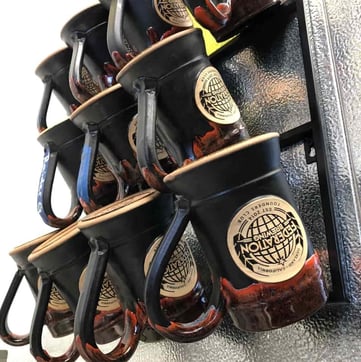
Whereas a limited club offers exclusivity, an unlimited club creates more flexibility. At any point during the year, a customer can buy into the mug club; typically, their benefits will renew on the anniversary date of their purchase. The main advantage with this type of rolling membership is that you can bring in sales year-round.
On the flipside, keeping membership open throughout the year means that your staff and employees will need to be trained to handle a new signup at any point in time. You’ll need to develop a system to keep track of everyone’s membership and diligently run the program.
“The number one piece of advice I can give someone [starting a mug club] is to find software to handle your memberships for you,” says Matt Sutherland, Brand Manager at Hopworks Urban Brewery (HUB) in Portland, Oregon. For the last five or six years, the brewery has been running a rolling admissions mug club. Although Sutherland started out by listing all HUB’s members in an Excel spreadsheet, he eventually outgrew that method.
“Instead of a bunch of pieces of paper floating around with someone's name on it and when they started, an online management system will track memberships, remind customers to renew, and help you retarget customers so you don’t use them,” says Sutherland.
Tools like Oznr, an online marketplace for connecting craft beverage enthusiasts with the brands they love, can help breweries run the gamut from mug club memberships all the way up to larger bottle societies.
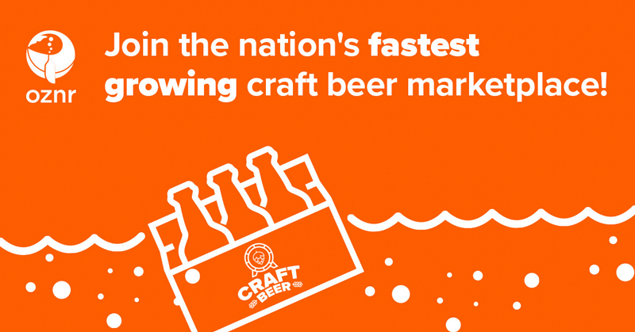
A Note on Bottle Societies
One quick note on bottle societies -- when looking at mug clubs, it’s also important to realize that a bottle society might be a better option. The biggest advantage of a bottle society is that you’ll receive a huge influx of cash upfront from members joining your society, which typically happens yearly. According to Eric Thelen, co-founder of Oznr, oftentimes your initial consumer fees will help pay for any unique equipment, barrels, and other materials you’ll need to run a bottle society in your first year. However, running a bottle membership is its own beast and has its own considerations, so make sure to do your research!
How Much Money Can Your Mug Club Make?
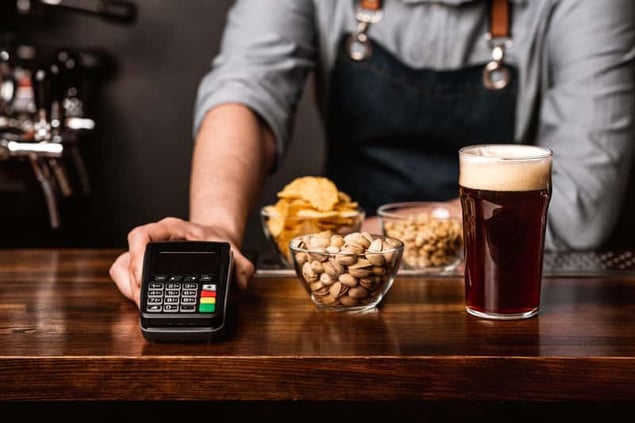
When considering a mug club from a financial perspective, you have two main considerations: Do you have the financial resources and labor necessary to manage a mug club? And, if you do, what can you afford to charge for a membership?
Before you begin, come up with your own pricing model.
“Essentially, how often would a consumer have to come in to pay off a membership?” says Marvil. “For the first year, we settled on people breaking even if they drank around forty beers over the course of the year. After that, they received a pretty sizable discount.”
Mug club pricing will be unique for each brewery, as it’s determined by understanding what your business can afford to give away in relation to your revenue.
For example, HUB charges $49 for its mug club program and offers members a 21-ounce pour for the price of a 16-ounce beer all year long, as well as one free birthday beer, a couple of merch items, and discounts on certain purchases. On the other hand, Lamplighter and Federation charge $200 for a yearly membership, which includes customized mugs, 20-ounce pours, and birthday beers as well as exclusive events, first access to special releases, and more.
“You have to figure out your value proposition,” says Thelen. “What are people buying? A mug club is all about mental math. People will ask themselves, ‘At what point does the club pay for itself?’”
So take some time to sharpen your pencils and do the math.
What Perks Should You Include In Your Mug Club?
You want your members to be like ambassadors for your brand. What will entice someone to join your club? They should get excited about the incentives you’re offering and want to share with others, because most times your mug club members will be your biggest supporters and advertisers.
With that in mind, you need to create unique, individualized, or exclusive perks. If you’re unsure where to start, Sutherland suggests taking a look at what others are doing around you.
“Survey the market to see what's common,” he says. “If it’s [a perk] that’s everywhere, that’s probably a good sign. If not, maybe there is a hole in the market you can fill. It wouldn’t hurt to check in with friends at other breweries to see what motivates their customers, but when it comes down to it, go with your gut. As a customer, what would you be interested in?”
The Mug

For most venues, the most important part of a mug club is right in the name. It’s all about the mug! Make your mug unique and personalized to your brand. Consider the color, look, feel, and how you want to brand it. People will be sitting in your taproom drinking from this statement piece, so it needs to be a focal point.
At Lamplighter, Marvil commissions 100 handmade ceramic mugs from Lainey Fink Scott, Lamplighter’s graphic designer -- who also happens to be a potter. When the club renews each year, Marvil says they host a mug choosing party, setting out all of the specialized drinking vessels for the year on a table. Marvil shuts down the taproom for a night just for mug club members who come in and choose which mug they would like for the year. It’s a special, handmade touch that sets Lamplighter’s mug club apart from others.
Similarly, Federation commissions a local artist to hand make all of their ceramic mugs.
“People vet whether your mug is nice and special,” says Jewell. “Ours is heavy ceramic, so it holds the cold longer, which is very important on a warm California day.”
Additionally, Federation adds their logo front and center and lets people physically sign the bottom of their mugs with whatever name they’d like. Personal touches like these build ownership within your members and make them feel a part of an exclusive community.
Of course, just as important as the mug design is how you display the mugs in your taproom. Hang them proudly behind the bar or build out an eye-catching shelf. Just do something that draws in more eyes and starts conversations with folks to attract more potential members.
“When people in the taproom see someone drinking out of the mug, they ask, ‘What’s that? How do I become a part of it?’” says Mavril.
While these personal touches can be more expensive upfront, think about framing the cost as an investment. For most venues, the cost of buying into these prized touches at the beginning will be recouped pretty quickly as they see their club grow. And you can always build the cost of the mug into your dues.
The Pour
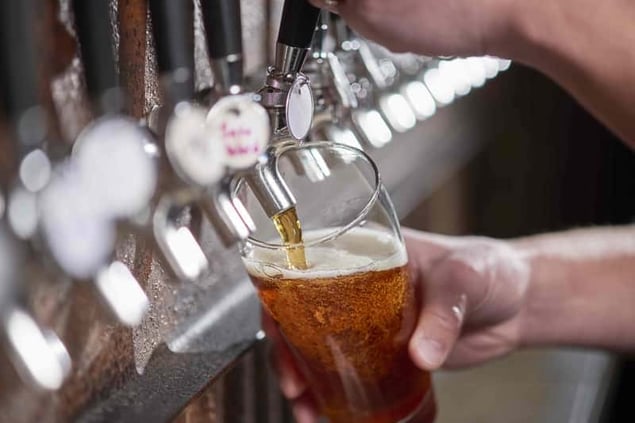
Let customers put that big beautiful mug to good use. You have two options here: pouring more, or pouring for less.
To look at the first option, let’s say you offer your customers a 20-ounce ceramic mug, but traditionally you only offer 16-ounce or 12-ounce pours in your taproom. At that point, you create perceived value by giving your mug club members an extra 4 to 6-ounces of beer every time they drink for the price of a 16-ounce or 12-ounce glass. Ultimately, this benefits the brewery. You can easily make up the extra ounces just by selling a taster pour.
If you’re willing to pour more, consider paring down the options available for mug club members to enjoy. Creating a tight mug club draft list has many advantages. First, you’ll be less likely to over serve your customers. Offering larger pours of higher ABV beers can easily lead to consumers drinking too much and put your staff in the precarious position of monitoring your mug club fans.
On the flipside, there’s also a chance that someone who orders a 20-ounce pour of something like an 8% ABV Imperial IPA won’t be able to finish the entire mug. While they still technically paid for the beer, that's some precious liquid left out to pasture.
So consider choosing a refined, concise draft list for mug club members composed of easy-drinking lagers and ales. And stay away from the higher-ABV stouts, imperials, doubles, etc., or at least put a limit on those options.
Alternatively, your mug club membership could offer a certain discount on each member’s drink. For example, Federation Brewing offers its members $1 off their first beer on every visit. While offering a discount on beer is very appealing to the consumer, keep in mind that it can have a long term effect on your bottom line. Let’s say you charge $8 for a pint. If your members get $1 off that first beer they’re getting a 12.5% discount. And if you only charge $5 for a pint, a $1 off perk accumulates to a 20% discount.
But, a discount on pours could incentivize customers to come in more often to take advantage of this perk. And in the long run, developing a community of these “regulars” could pay off for itself. Again, it’s all about weighing the best option for your particular business.
Exclusive Events, Tours, Tasting, Releases

Building on that exclusivity, offer events that are only open to your mug club members. These programs can come in many forms, from something as simple as a bottle share to something as complex as a private tour or tasting.
Thelen says that in his experience, venues that promise at least one or two member-exclusive events throughout the year have more success.
“Exclusivity is what sells,” says Thelen. “[It’s all about] the value proposition that I’m getting as a consumer.”
At Lamplighter, Marvil and brewmaster Tyler Fitzpatrick host mug club “member-only” events that walk folks through an insider tour of the brewery, where they offer people pours right off the tanks. Although Marvil says these exclusive nights can be hit or miss, with on average about 15 out of the 100 mug club members signing up per event, she still understands their value, because they foster that all-important sense of belonging.
Tapping into that goal of creating community, Jewell says Federation offered Masked Mug Club Mondays every Monday this past March to bring people out to the taproom.
“It was freezing cold and in the middle of a pandemic and people still showed up all bundled up to see each other and have some pints together,” says Jewell, who points out that these events don’t necessarily need to happen every week to have value. You can run them monthly, weekly during a certain month, or even just once or twice a year. These events put members “in the know” and grants them more ownership; they feel like a bigger part of your business.
Lastly, regardless of how many exclusive events you host a year, you should alert your mug club members first to any special releases. Especially your most sought after or rare beers -- these should hit your mug club members’ eyes before anyone else. Remember, your mug club members are your best brand ambassadors. Let them try a rare release first and they’ll be more likely to post about it on social media and tell their friends.
Swag Sales
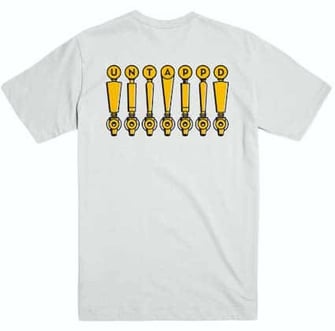
In addition to one-off events, year round discounts on special items such as t-shirts, hats, bottles, and other merch can be appealing to your fans. This is a small consideration, but you can get pretty creative here. Do you have something in your store that isn’t moving? Consider offering a large discount on it to your mug club member or featuring it in a flash sale.
You can also get creative with food. Do you have a food truck that stops by every Wednesday night? To attract people to the taproom on an “off day,” tell your mug club members you’ll offer them a $5 voucher to the food truck on Wednesdays. Then negotiate with the food truck so you both get value.
Jewell says this perk falls into a category that she calls “surprise and delight.” Adding something like a food voucher inside a mug club members mug that they can discover the next time they come in to drink will be an unexpected bonus for your members.
Guest Perks
As a final thought on perks, think about your guest policy. Can your mug club member bring a guest with them and include them in their own special dollars-off on beer or merch?
If you extend a discount to friends, it could increase foot traffic in your taproom along with the frequency your member visits. A mug club fan that brings more friends with them to drink every time will drive more revenue on a per person basis.
How To Market Your Mug Club

Whether you’re looking to sell out a certain amount of memberships per year or keep your club open on a rolling basis, the mug club probably won’t sell itself. You need to promote the club and spread the word to your community.
Social Media / Newsletter
In today’s entrepreneurial climate, running a dedicated social media is a must. Take advantage of the platform you’ve already built on Instagram, Facebook, or Twitter to promote your mug club. This is where a one-of-a-kind drinking vessel really comes in handy. Take photos of that gorgeous mug around your brewery and show people in the taproom enjoying their mug club perks. Just remember to get permission from people before you post their photos.
Once you’ve secured your mug club members, add them to a special newsletter list. With most email hosts, it’s easy to create tags that place certain subscribers into special groups or segments. Then, ping these guests every so often to let them know what they signed up for. Alert them about that special brewery tour and tasting you’re hosting, tell them when that limited release is coming out and emphasize they’re hearing about it first, and let them know when renewals are coming up.
Word of Mouth
As we’ve hammered home, your current mug club members are your best advocates. They’re the ones who will tell their friends, draw eyes in the taproom when they use their mug, and post on their own social accounts. The better your program, the more likely your customers will be to share.
One Final Note: A Mug Club Must
The more complicated it is to join the mug club, the harder it will be to turn hands into fans. So make the sign-up process as simple as possible.
Offer an easy form to fill out on your website and give people the option to sign-up in person. Or, use a platform like Oznr to gather this information for you. Just ask people to provide as few details as possible: name, email address, and maybe birth date, at the most.
And, make sure you give the first right of refusal to your current members. When the time comes to renew, your current members should be the first to know and have the opportunity to decide to participate again ahead of new members.
Your Mug Club Is Ready. Time to Start Toasting!
As you’ve seen, there’s no “one-size-fits-all” mug club. A larger venue in a populous city might be able to offer 100 handmade ceramic mugs from a local artist, while a smaller brewery in a tinier town might only be able to give out 25 glass ones.
You know your own business better than anyone else. Plus, every brand’s consumers are unique. Figure out your specific needs and goals and decide what your customers love most about you. Then, use the answers to build out a club your customers want to join.
Above all, keep it simple. The last thing you want is to create something that causes undue stress and work.
A mug club should be like your business: a community of people coming together to hang out, enjoy themselves, and champion your brand. So plan and get started -- we’ll toast to your success!
Move Beyond Your Spreadsheets
Have control over your entire inventory and fulfillment processes from anywhere with Ollie. Even integrate with your existing inventory and accounting applications.
